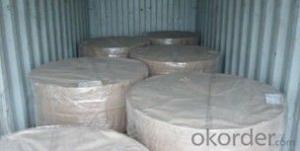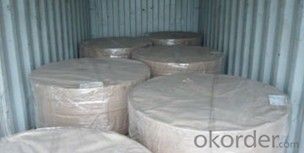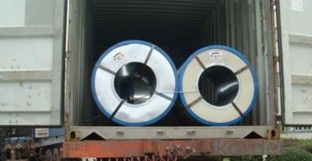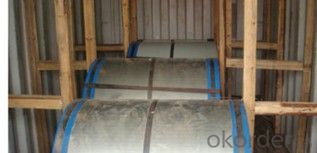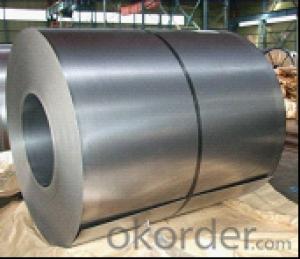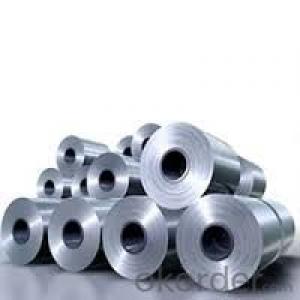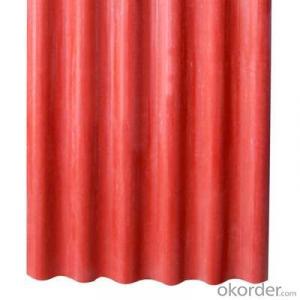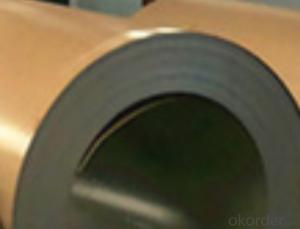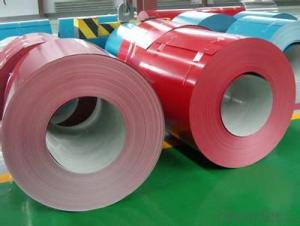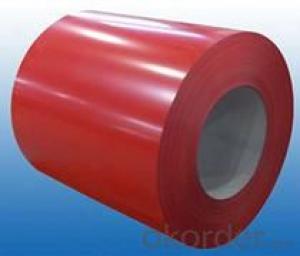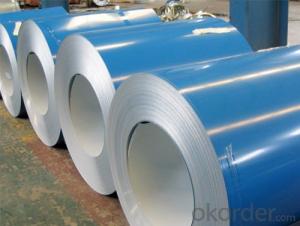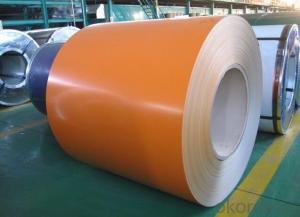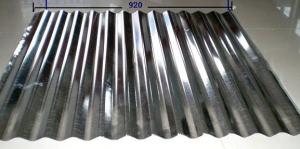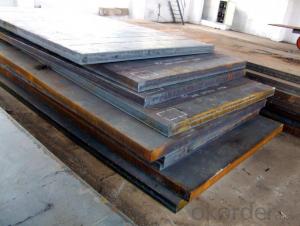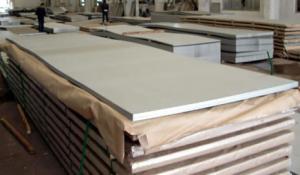Prepainted Galvanized Steel Coil With Best Quality
- Loading Port:
- Tianjin
- Payment Terms:
- TT OR LC
- Min Order Qty:
- 25 m.t.
- Supply Capability:
- 20000 m.t./month
OKorder Service Pledge
OKorder Financial Service
You Might Also Like
Product Name | Prepainted Galvanized Steel Coil With Best Quality |
Brand | CNBM |
Material | DX51D,CGCC,CGCH,CGLCC |
Thickness | 0.14mm-0.8mm |
Width | 750mm-1250mm |
Temper | Full hard,half hard,soft |
Inner Diameter of Coil | 508mm/610mm |
Coating | AZ30-AZ150,Z40-Z275g/m² |
Coil Weight | 2-5mt |
Paint(Top side) | 15-25micron |
Paint(Back side) | 5-10micron |
Color | Ral Chart,as per customer's color swatch |
Paints | PE; HDP; SMP; PVDF |
Application | Structural use ,roofing, commercial use,household appliance,industry etc. |
Package: | Waterproof paper+plastic film+iron packing+bundling,or as per customers request. |
Price terms | FOB,CFR,CIF or as your request |
Delivery time | Within 15-20 days after receipt 30% deposit or L/C at sight |
MOQ | 25 Mt (one 20ft FCL) |
3) Technical Specifications of PPGI steel coil>>>
Test Item | Standard | Result |
T Bend | NCCA11-19 | <3T |
Cupule Test | GB/T9753 | >8mm |
Impact(Shock Force J) | GB/T1732 | >9J |
Adhension(MEK) | GB/T9286 | ≥ 0 |
Pencil Hardness | GB/T6739 | >2H |
Gloss | GB/T1743 | <5% |
Chromatism(E) | ECCA T3 | E<5 |
MEK Scrub Resistance | MCCA11-18 | >100 |
Salt Spray Resistance | GB/T10125 | 500hr |
4) PPGI Prepainted Steel Coil Characteristic >>>
1.Pollution-free and economy
2.Extensive usability
3.Improvement of corporate image
4.Excellent workability, weatherability and elegant appearance.
1) PPGI Prepainted Steel Coil Introduction>>>
Color coated steel is a new prepainted steel product that develops rapidly in the last three decades,which are produced by coating a layer of paint on the surface of cold rolled,galvanized or galvalume coils.The products are made in the process of chemical pretreatment ,initial coating and refining coating by high-speed continuously manufacturing equipment. The coating quality is more smoother,mare stable and more ideal than th quality of brushing.
Color coated can keep the vivid color for a long time with excellent decoration,formability, corrosion resistance and coating adhesion.Color coated steel has become ideal construction material because of its efficient construction, energy conservation and depollution
· Standard: AISI, ASTM, BS, DIN, GB, JIS
· Grade: DX51D,CGCC,CGCH, CGLCC
· Thickness: 0.14mm-0.8mm
· Place of Origin: Shandong, China (Mainland)
· Brand Name: JNC
· Model Number: 0.14mm-0.8mm/750mm-1250mm
· Type: Steel Coil
· Technique: Cold Rolled
· Surface Treatment: Coated
· Application: Structural use ,roofing, commercial use,household appliance,industry
· Special Use: High-strength Steel Plate
· Width: 750mm-1250mm
· Length: Customized or as your request
· Zinc Coating: 40-275g/square meter
· Color: as RAL or as your request
· Trustworthy supplier: Prepainted Steel Coil/sheet
· Coil Weight: 2-5MT
· Paints: Standard Polyester(PE)
· Approved Certificate: ISO9001
· Quality: Top quality
· Test: Will test the products by the Third Part
· Temper: Full hard, half hard,soft
- Q: Are steel sheets available in textured finishes?
- Yes, steel sheets are available in textured finishes. Textured finishes can be achieved through various processes such as embossing, etching, or brushing. These techniques create patterns or textures on the surface of the steel sheet, giving it a unique and visually appealing appearance. These textured finishes not only enhance the aesthetic appeal of the steel sheet but also provide functional benefits like improved grip, reduced glare, or increased durability. Different types of textures can be applied to steel sheets to suit different applications and design preferences.
- Q: What is the difference between the zinc plated color guide and the profiled steel sheet?
- Because the original plate is very thin, the quality of the anticorrosive coating directly affects the service life of the profiled steel sheet. In order to meet the requirements of processing and rust prevention, the coated steel plate shall be examined in accordance with the relevant provisions. Under normal circumstances, thin steel plate can also be used according to the requirements, after pressing type, and then coated with anti rust paint, or use stainless steel sheet, the original plate.Profiled steel sheet used in industrial plants, housing panels, wall panels, in the absence of general insulation requirements, steel per square meter of about 5~11 kilograms. Insulation requirements, availability of mineral wool board, glass wool, foam and other insulation materials. The profiled steel plate and the concrete are combined into a composite floor board, and the wooden formwork can be omitted, and the utility model can be used as a load-bearing structure. At the same time to strengthen the binding force of steel sheet and concrete, should be pre welding studs in steel plate or pressing two-way stiffener
- Q: How can the white steel plate be bright and cleaned?
- White steel plate has higher plasticity, toughness and mechanical strength, acid, alkaline gas, solution and other media corrosion. It is an alloy steel which is not easily rusted, but it is not absolutely rusty.
- Q: Can steel sheets be used for heat transfer applications?
- Yes, steel sheets can be used for heat transfer applications. Steel is a good conductor of heat, which means it can efficiently transfer heat from one surface to another. Steel sheets are often used in various heat transfer applications, such as heat exchangers, HVAC systems, and industrial machinery. They are known for their high thermal conductivity and durability, making them suitable for transferring heat in a wide range of industries and applications. Additionally, steel sheets can be easily fabricated and formed into different shapes and sizes, allowing for customized heat transfer solutions.
- Q: What are the different surface treatments for stainless steel sheets?
- Some of the different surface treatments for stainless steel sheets include brushing, mirror polishing, bead blasting, etching, and electroplating. Each treatment provides a different aesthetic appearance and can also enhance the corrosion resistance and durability of the stainless steel.
- Q: What is the corrosion resistance of steel sheets?
- The corrosion resistance of steel sheets varies depending on the type of steel, its composition, and the environmental conditions it is exposed to. Generally, stainless steel sheets offer excellent corrosion resistance due to the presence of chromium, which forms a protective oxide layer on the surface. However, other types of steel sheets may be susceptible to corrosion if not properly treated or coated.
- Q: What are the safety precautions for handling steel sheets?
- When handling steel sheets, it is important to follow several safety precautions. Firstly, workers should wear appropriate personal protective equipment (PPE) such as gloves, safety glasses, and steel-toed boots to protect themselves from potential injuries or hazards. Additionally, workers should be trained on proper lifting techniques to prevent strains or muscle injuries. It is crucial to use mechanical lifting equipment like cranes or forklifts when moving heavy steel sheets to avoid manual handling risks. Furthermore, the storage area should be organized and secured to prevent falling objects and injuries. Regular inspections of the sheets for defects or sharp edges are necessary to prevent cuts or punctures. Lastly, workers should be aware of the proper procedures for cutting or shaping steel sheets, using tools that are well-maintained and in good working condition. Adhering to these safety precautions will help minimize the risk of accidents and ensure a safe working environment.
- Q: What is the process of applying anti-slip patterns to steel sheets?
- The process of applying anti-slip patterns to steel sheets typically involves using specialized equipment and techniques to create raised patterns on the surface of the sheets. This is often done through a process called embossing, where the steel is passed through a series of rollers or dies that imprint a textured pattern onto the surface. This pattern helps to provide traction and prevent slippage on the steel sheets, making them safer to walk on or handle in various applications.
- Q: How are steel sheets tested for quality?
- To ensure compliance with required standards, various methods are employed to test the quality of steel sheets. Among these methods, the tensile strength test is commonly used. This test gauges the steel sheet's ability to withstand stress before breaking, thus determining its durability and reliability in different applications. Another significant test is the hardness test, which measures the steel sheet's resistance to indentation or scratching. Specialized tools like Brinell or Rockwell hardness testers are utilized for this purpose. The hardness test aids in assessing the steel sheet's capacity to endure wear and tear, making it suitable for specific applications. The thickness of the steel sheet is also examined using a micrometer or ultrasonic thickness gauge to ensure it meets the necessary specifications. This is crucial as the thickness directly impacts the sheet's strength and ability to withstand external forces. Furthermore, visual inspection is carried out by trained professionals to identify any surface defects such as cracks, pits, or corrosion. Through meticulous examination, any irregularities compromising the steel sheet's quality can be detected. Chemical composition analysis is another pivotal test that determines the presence and proportion of various elements in the steel sheet. Spectrometry or X-ray fluorescence techniques are employed to ensure the steel sheet meets the desired chemical requirements. Moreover, steel sheets may undergo additional tests such as impact testing, bend testing, and fatigue testing to evaluate their performance under specific conditions. These tests replicate real-world scenarios and assess the steel sheet's ability to withstand anticipated loads and stresses. In conclusion, steel sheets are subjected to rigorous quality testing to meet the necessary standards and provide customers with reliable and durable products. These tests enable manufacturers to identify potential flaws or defects, allowing them to rectify any issues and deliver high-quality steel sheets to the market.
- Q: Are steel sheets suitable for roofing?
- Indeed, steel sheets make an ideal roofing material. Steel, being both sturdy and durable, can endure even the harshest weather conditions, including heavy rainfall, snow, and strong winds. Moreover, it boasts fire resistance, pest resistance, and rot resistance, making it a trustworthy option for long-lasting roofing solutions. In addition to these advantages, steel sheets are lightweight and simple to install, leading to reduced labor and installation expenses. Furthermore, they are available in a wide range of colors and finishes, enabling customization to suit the aesthetic of any structure. All in all, steel sheets offer exceptional protection and durability, which explains their popularity in roofing applications.
Send your message to us
Prepainted Galvanized Steel Coil With Best Quality
- Loading Port:
- Tianjin
- Payment Terms:
- TT OR LC
- Min Order Qty:
- 25 m.t.
- Supply Capability:
- 20000 m.t./month
OKorder Service Pledge
OKorder Financial Service
Similar products
Hot products
Hot Searches
Related keywords
